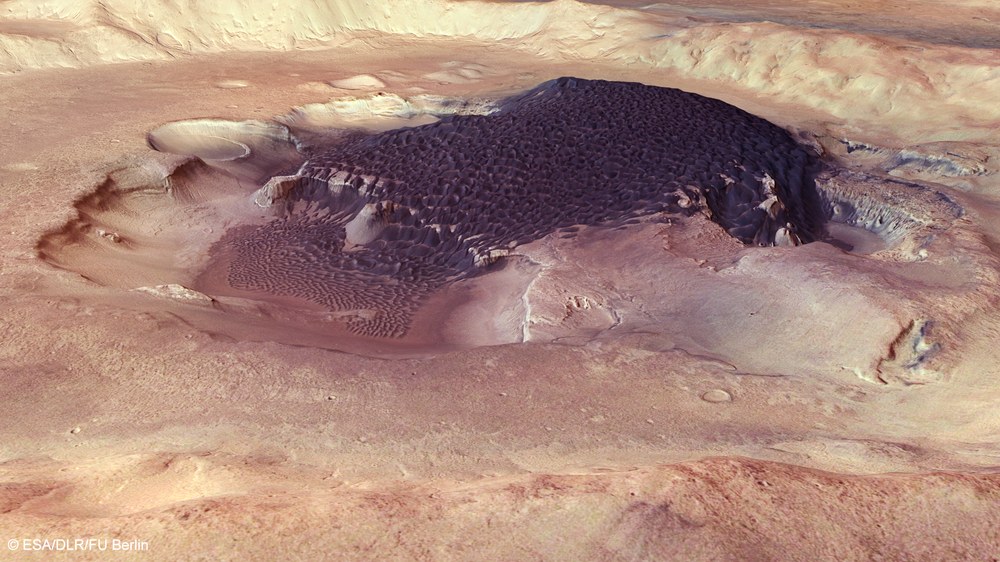Simply Marvellous!
The European Space Agency's (ESA) Mars Express spacecraft was only intended to orbit Earth's planetary neighbour for two years. But, as of December 2023, it will have been operating there for 20 years. One of the seven experiments on board is the High Resolution Stereo Camera (HRSC), which was built by DLR in cooperation with German industry. To this day, the image data acquired by this instrument continues to provide important scientific insights – from the traces left by water and ice on the Red Planet, some of which date back billions of years, to deciphering the planet's puzzling climate history and the current changes in the martian landscape caused by wind and weather.


Twenty years ago, on 2 June 2003, during a fine summer's day in Berlin, some 200 pairs of eyes from the fields of scientific research, technology, space administration and the media witnessed the launch of Europe's first mission to another planet on large screens in Berlin-Adlershof. The launch of Mars Express from the distant Kazakh spaceport of Baikonur went perfectly. The sense of relief was enormous, yet the celebrations remained muted. The disappointment over the loss of two DLR camera systems during the ill-fated Russian Mars 96 mission, which crashed into the Pacific Ocean a few hours after launch in November 1996, was still too fresh.
On arrival on 25 December 2003, once again with a DLR camera on board, (almost) everything went as expected. This time, the Mars Express orbiter, referred to as 'MEX' by everyone involved, slowed down to enter an orbit around Earth's outer neighbouring planet. The previously detached British lander, Beagle 2, arrived on Mars but transmitted no data. However, all seven of the orbiter's experiments worked perfectly. Today, after years and 25,000 orbits later, in a small technological miracle, they continue to do so – with minor limitations.

ESA had originally planned the mission to last only one Mars year, or just under two Earth years. But like the famous VW 'Beetle', MEX is indestructible. And so is the HRSC instrument developed at DLR, which is still unparalleled in planetary research. Over the past two decades, HRSC has recorded Mars globally in high-resolution, colour and in 3D, using technology that, despite being completely outdated from today's perspective, is absolutely reliable.

The DLR Institute of Planetary Research in Berlin plans the HRSC image acquisitions, manages their usage and, together with the Freie Universität Berlin, processes the image data of the martian surface acquired by nine sensors into high-quality data products. For the first time, these products have allowed geological processes to be quantified and morphological features to be studied spatially. The topographic data have also been used by NASA to select landing sites for other missions – an extremely valuable dataset for scientific research and space exploration. In addition, Mars Express has served as an orbiting radio relay station connecting NASA and Chinese landers with Earth when needed. This will continue for the foreseeable future. ESA has just extended the mission until the end of 2026, with the possibility of further extension until the end of 2028. Not every 'Beetle' has lasted that long!


Ein Beitrag von Ulrich Köhler aus dem DLRmagazin 173


